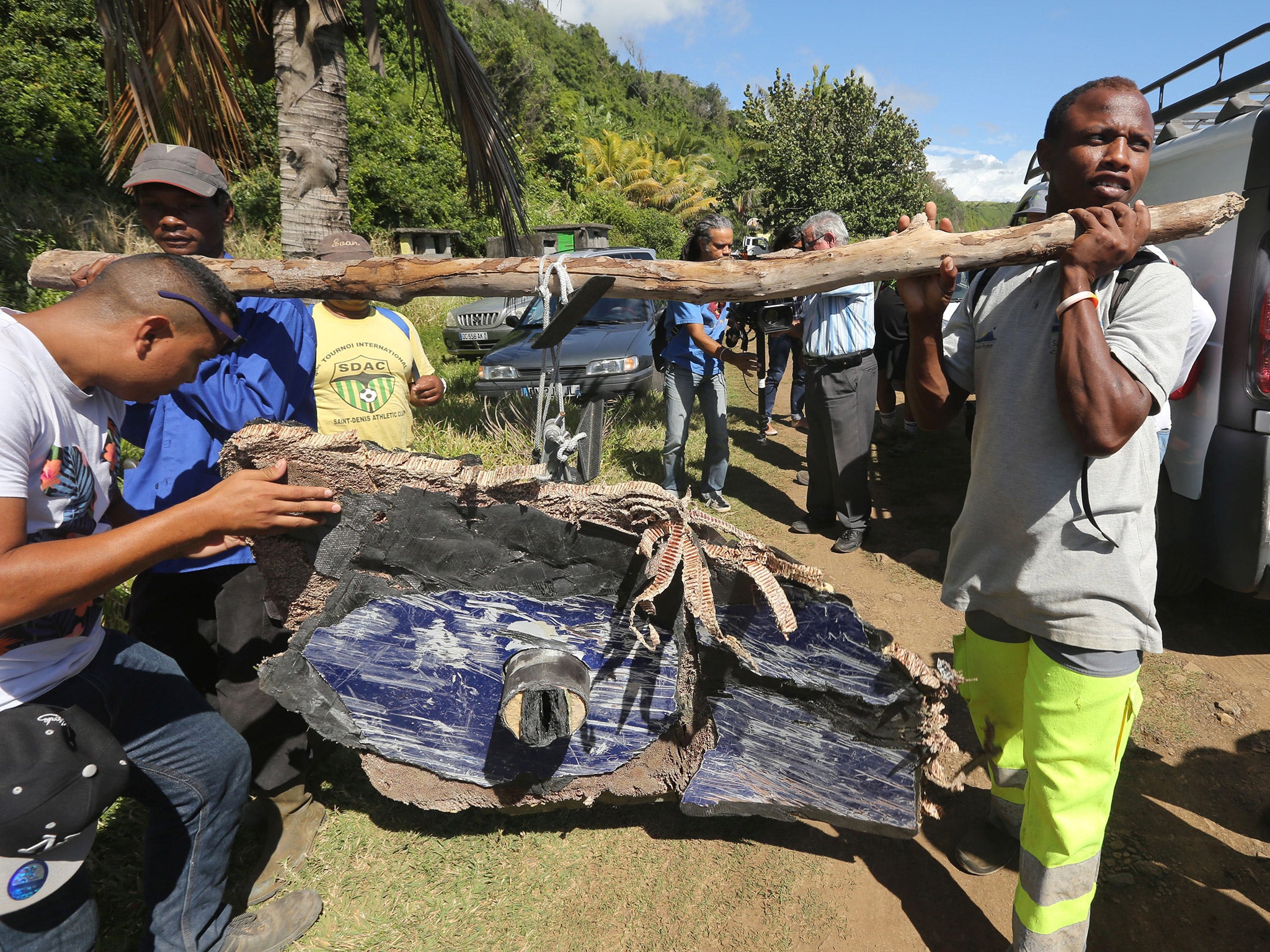MH370 search: Investigators confirm debris from plane but say they are still no nearer to discovering truth
MH370 disappeared in 2014 while on a routine flight from Kuala Lumpur to Beijing with 239 people on board

The deepest mystery in aviation history has taken another twist. As the relatives of those lost aboard flight MH370 prepare to mark two years since their loved ones disappeared, a piece of wreckage washed ashore on a sandbank off the coast of Mozambique is thought to be from the missing plane.
A US official told CNN that the debris found in the Indian Ocean is probably a piece of horizontal stabiliser skin from a Boeing 777. If that proves correct, it is highly likely that the source is the missing Malaysia Airlines jet.
MH370 disappeared on 8 March 2014 while on a routine flight from Kuala Lumpur to Beijing with 239 people on board. The last contact with the plane took place at 1.19am, when the captain acknowledged air-traffic control with the words “Good Night Malaysian three-seven-zero”.
It took the airline a further six hours to tell the world that one of its planes was missing. No distress messages were sent.
The location of the latest find, on an Indian Ocean shore, is consistent with the only confirmed wreckage from the plane, discovered on Reunion Island last July.
Malaysia Airlines said that until the latest find had been identified, it was “too speculative” to comment.
Speculation on the fate of the plane has been rife ever since the disappearance was announced. An air-sea rescue operation was launched in the South China Sea and the Gulf of Thailand; several days later, the home of the captain, Zaharie Shah, was searched by police. The theory that he was responsible for diverting the plane is one of many explanations for the loss that have filled the vacuum of uncertainty.
A week after the disappearance, the Malaysian prime minister, Najib Razak, made a shock revelation. A British company, Inmarsat, had demonstrated that the jet had remained aloft for at least seven hours after the last words from the flight deck.
Equipment on board the plane had responded automatically to a series of satellite “handshakes”. Analysis of these signals - the length of brief text messages - allowed investigators to construct an arc showing the range of possibilities for its last-known position before it was presumed to have run out of fuel and crashed.
MH370 debris - in pictures
Show all 7It was deduced to be flying along one of two corridors: north-west across southern China towards the Caspian Sea, or south across the Indian Ocean to an area west of Australia.
The search area was soon narrowed down to the “southern corridor,” and specifically a patch of sea west of Perth in Western Australia.
In September 2014, an Australian-led operation began a comprehensive search of the sea bed to identify anomalies that could be larger elements of the 777, such as engines and landing gear.
At the time, Martin Dolan, the bureau’s Chief Commissioner, told me: “We have determined a sequence of higher-probability search zones that we plan to cover progressively over the course of up to a year. We expect to find the aircraft in the course of that search, but there is no complete guarantee of success.”
Apart from a couple of old shipwrecks, the search operation has found nothing of interest. With the cost of the operation already in the tens of millions of pounds, it may be abandoned when the current phase ends in July. The latest find, if it is confirmed, will do nothing to help the relatives of those lost find closure.
Subscribe to Independent Premium to bookmark this article
Want to bookmark your favourite articles and stories to read or reference later? Start your Independent Premium subscription today.

Join our commenting forum
Join thought-provoking conversations, follow other Independent readers and see their replies